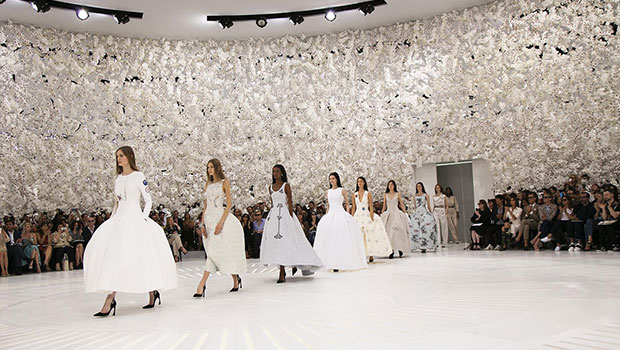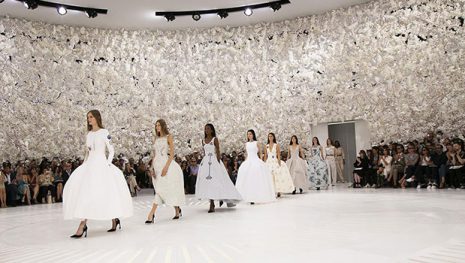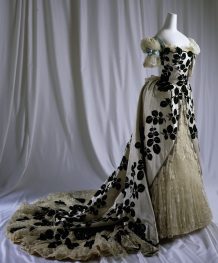The term haute couture originated in the mid-nineteenth century when Englishman Charles Frederick Worth‘s work was produced in Paris. Nowadays the term is used loosely to describe all high-fashion custom-fitted clothing, whether it is produced in Paris or in other fashion capitals such as London, Milan, New York or Tokyo. Haute couture translates from French to high sewing, high dressmaking or high fashion, and refers to high quality, expensive, custom-fitted clothing constructed by hand. Couture is a common abbreviation of haute couture and haute translates literally to “high.” Each couture piece is designed and constructed for the runway, much like an art exhibition. In France, the term haute couture is protected by law and is defined by the Chambre de commerce et d’industrie de Paris based in Paris.
The criteria for haute couture were established in 1945 and updated in 1992. To earn the right to call itself a couture house and to use the term haute couture in advertising and any other way, members of the Chambre syndicale de la haute couture must follow these rules:
- Design made-to-order for private clients, with one or more fittings.
- Have a workshop (atelier) in Paris that employs at least fifteen staff members full-time.
- Must have twenty, full-time technical people in at least one workshop (atelier).
- Every season, present a collection of at least fifty original designs to the public, both day and evening garments, in January and July of each year.















